Project Name
Como TaperiaPosted in
Design, Interior DesignLocation
Design Studio
Ste. MarieArea (sqm)
130| Detailed Information | |||||
|---|---|---|---|---|---|
| Project Name | Como Taperia | Posted in | Design, Interior Design | Location |
Vancouver, BC
Canada |
| Design Studio | Ste. Marie | Area (sqm) | 130 | ||

Photo by Conrad Brown. Styling by Kate Richard.
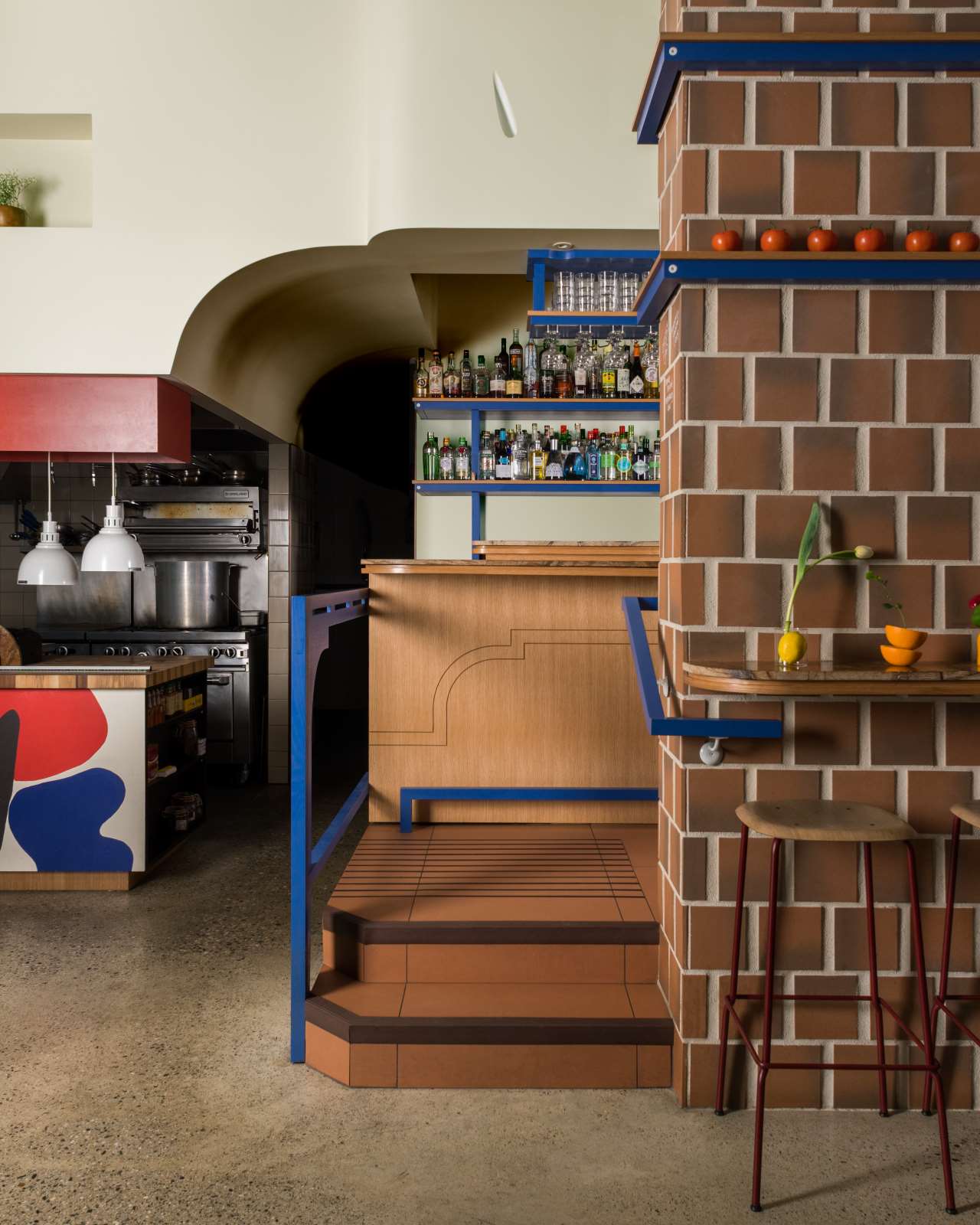
Photo by Conrad Brown. Styling by Kate Richard.
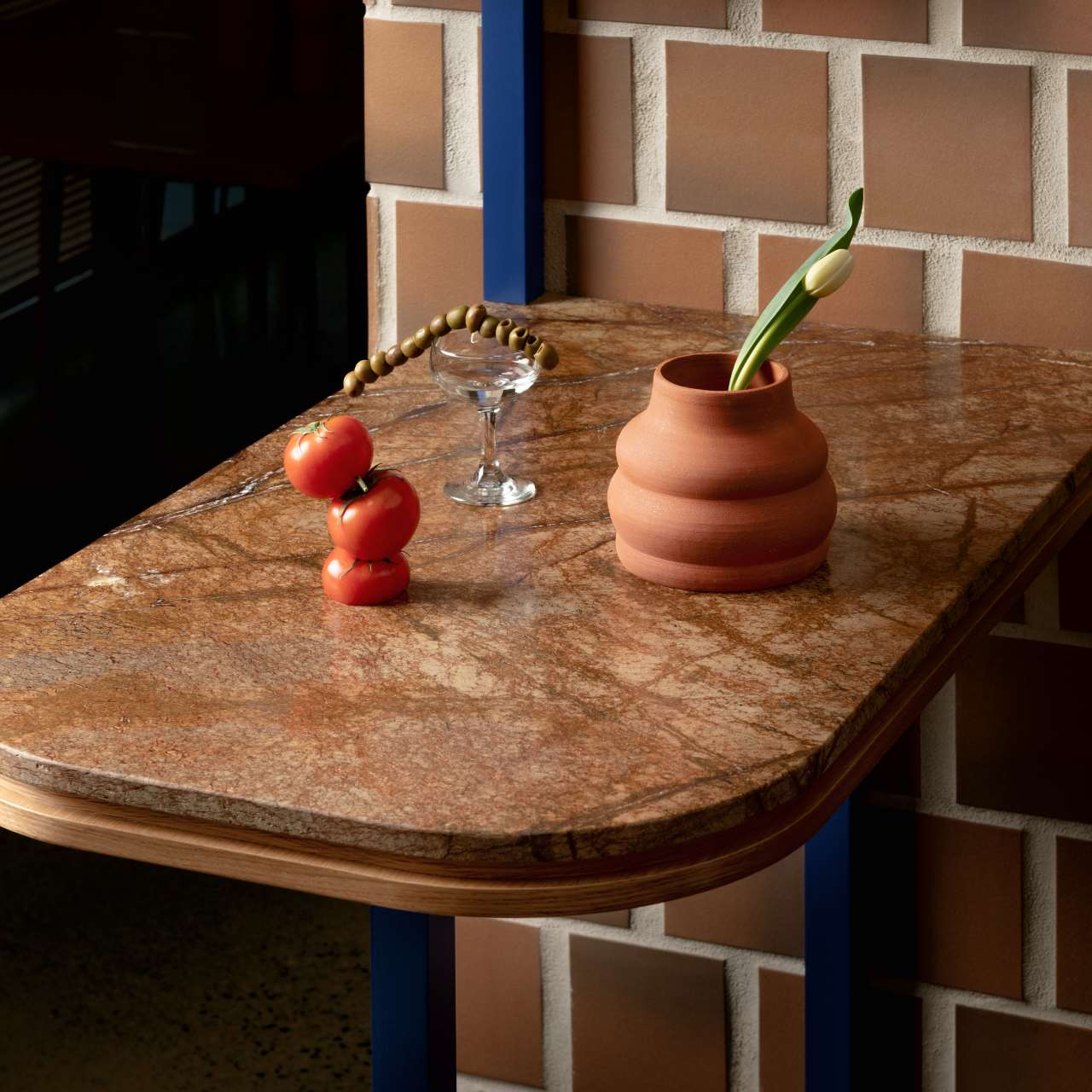
Photo by Conrad Brown. Styling by Kate Richard.
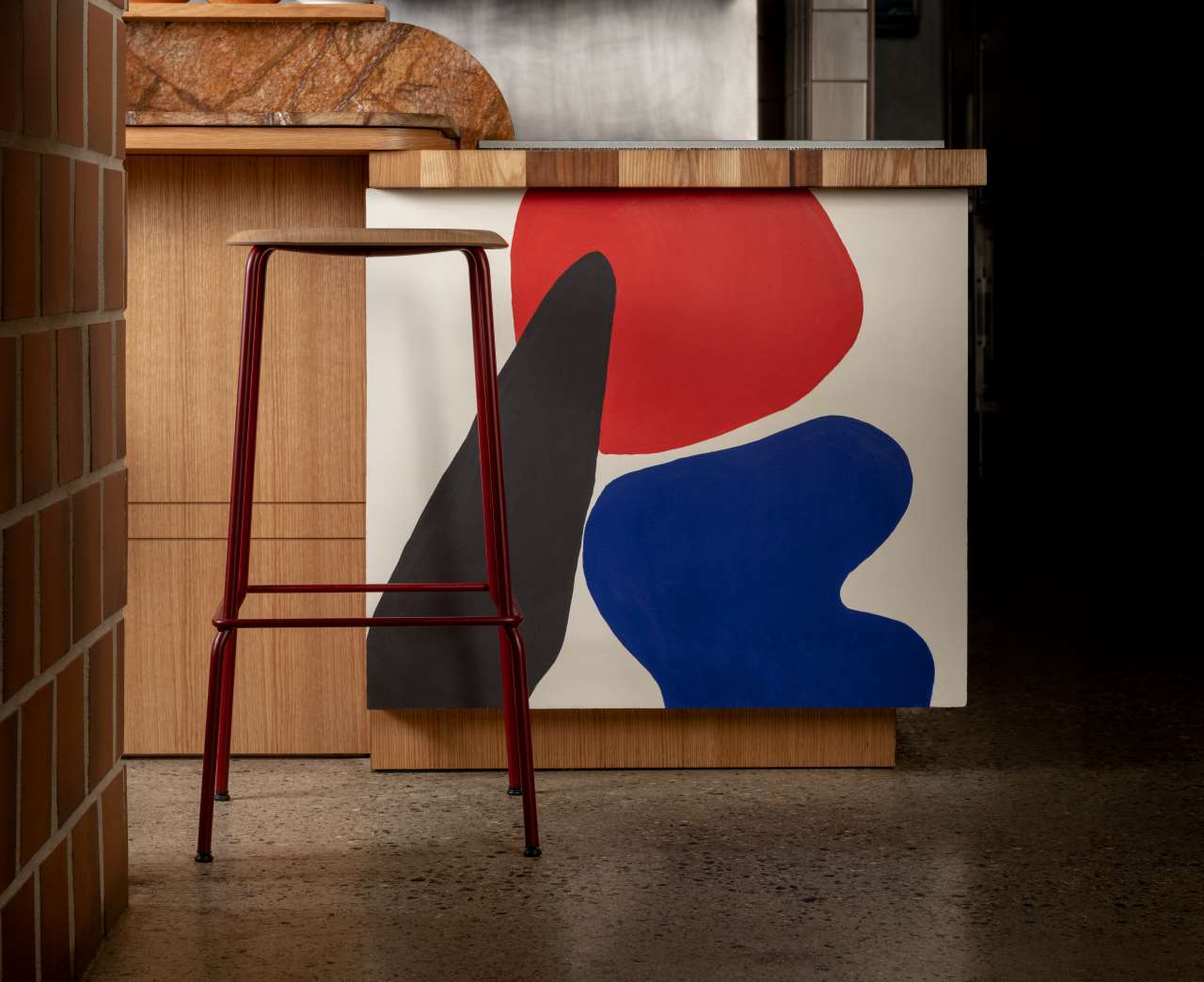
Photo by Conrad Brown. Styling by Kate Richard.
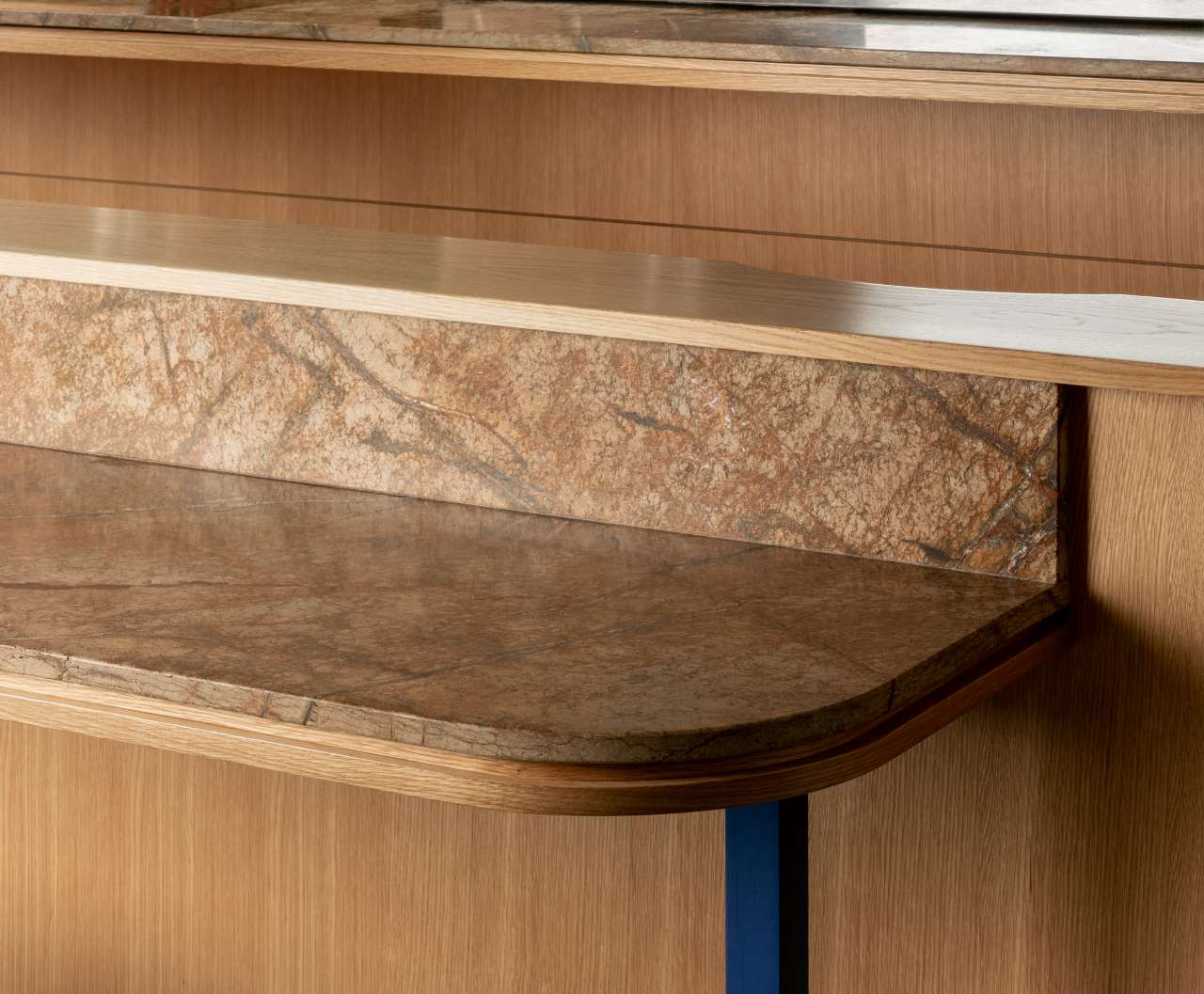
Photo by Conrad Brown. Styling by Kate Richard.
There’s no definitive account about the origins of tapas bars but the more fun version is certainly the one that purports that bartenders took advantage of the saucers placed on top of glasses of beer or sherry to keep the flies out. At some point the story goes that they must have realised that it would be a great idea to use the saucer as a plate to serve a little snack, perhaps in order to attract clients back, or maybe to keep them sober enough to stay for another drink. The bartenders’ unplanned, resourceful thinking intrigued the design team and convinced them to keep things simple and fun. As lead designer, Rachel Martinuk explains, “we employed this haphazard, relaxed approach throughout the design process, which liberated us to solve challenges with the same utilitarian, unfussy approach that we imagined the bar keepers of Barcelona, Madrid & Seville did”.
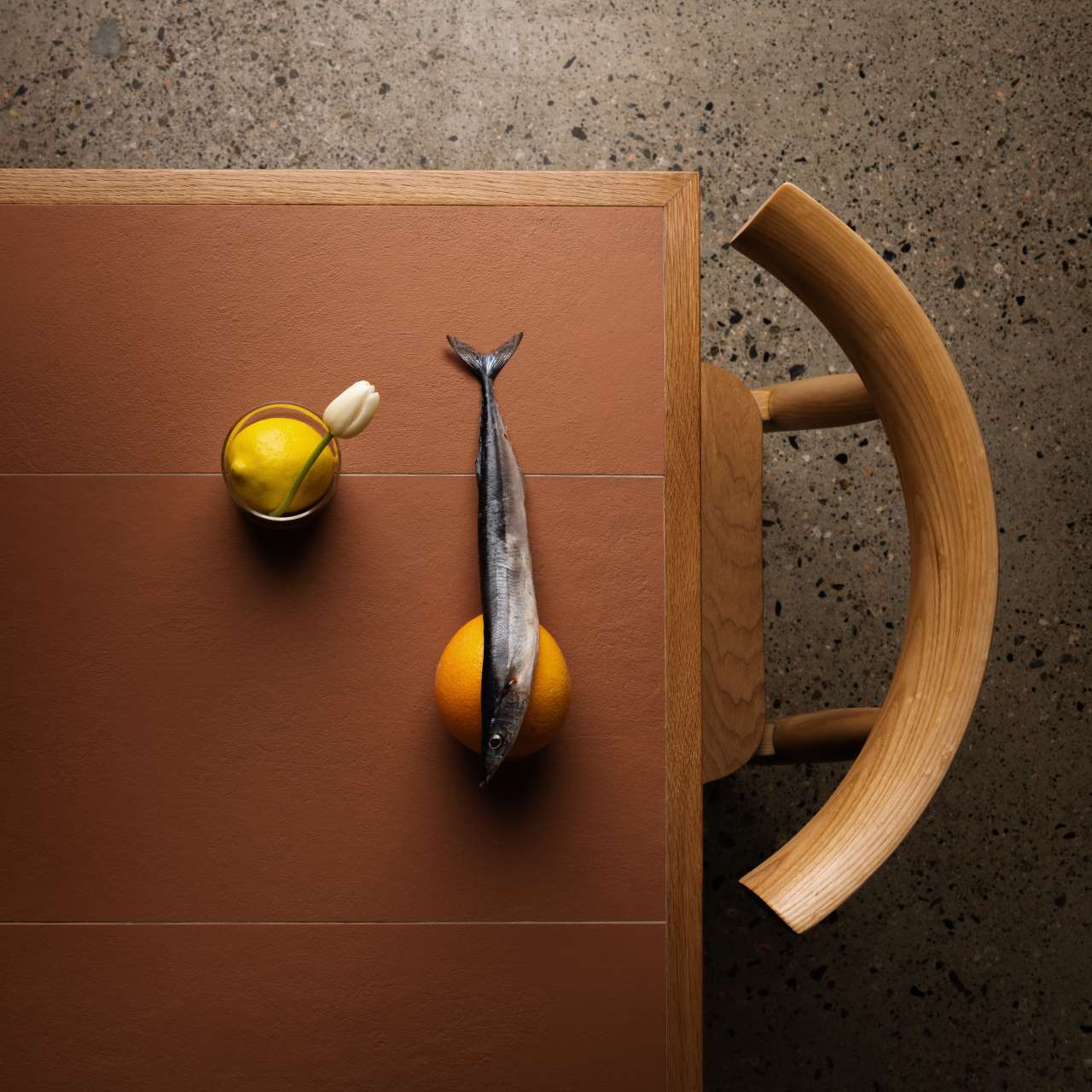
Photo by Conrad Brown. Styling by Kate Richard.
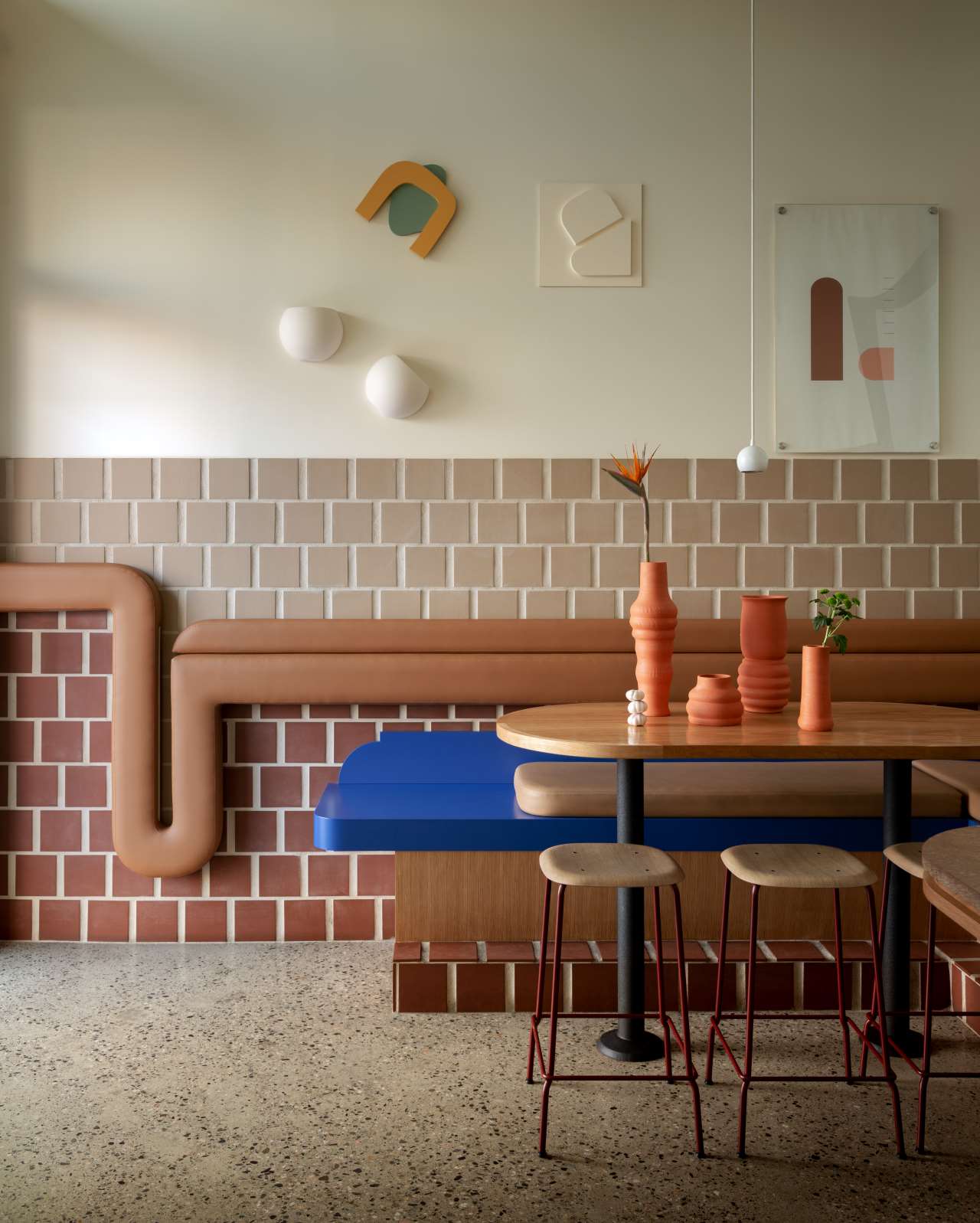
Photo by Conrad Brown. Styling by Kate Richard.
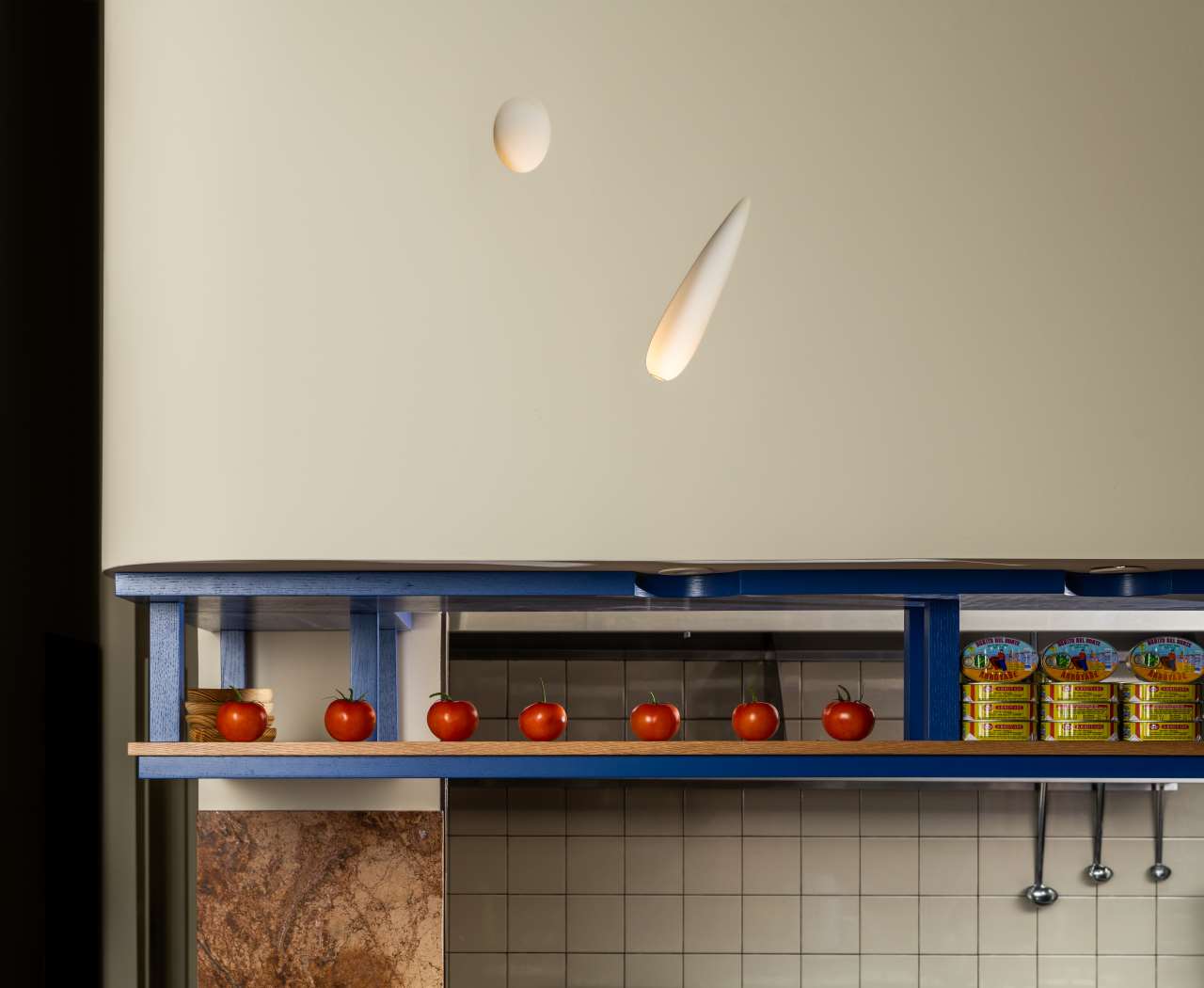
Photo by Conrad Brown. Styling by Kate Richard.
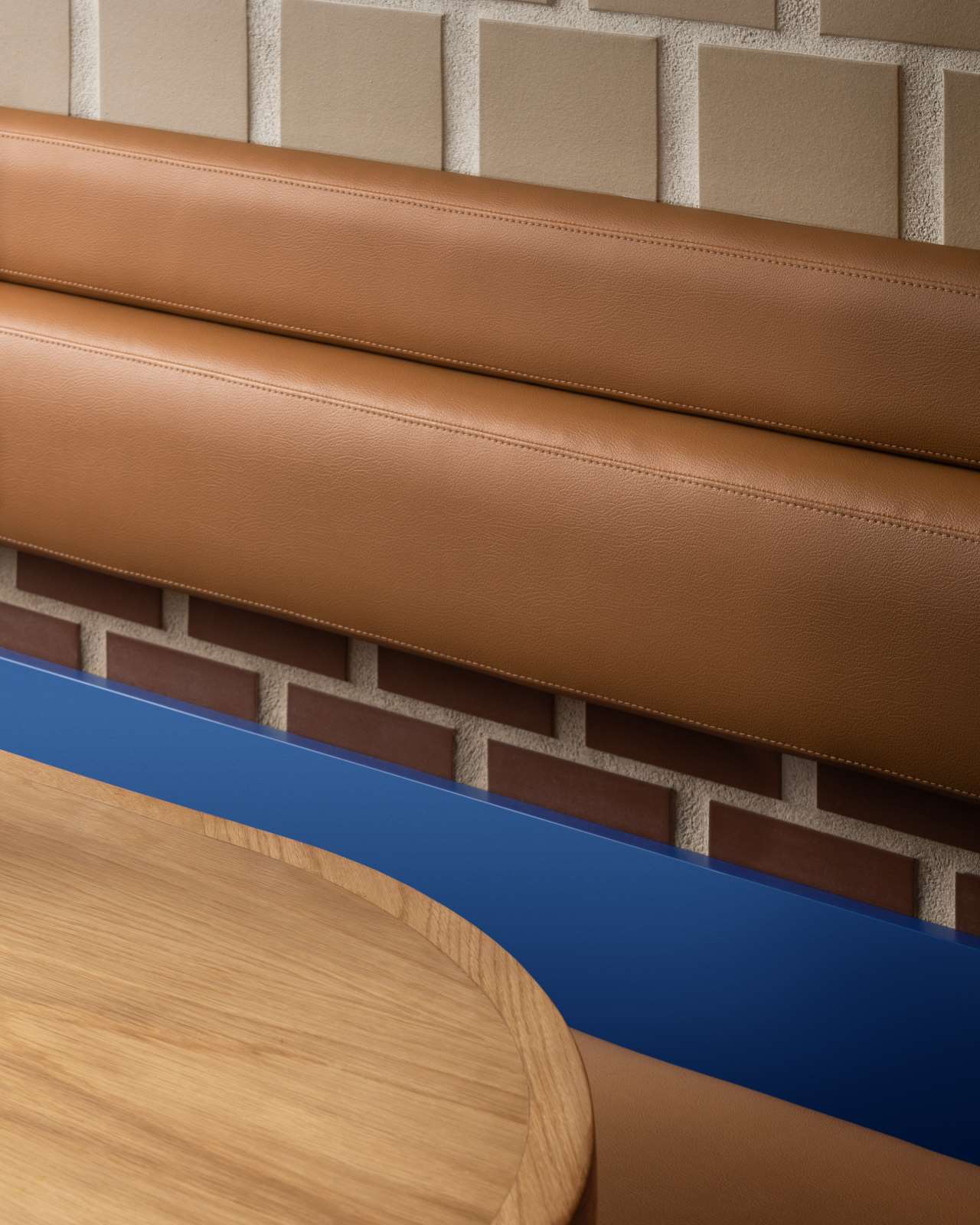
Photo by Conrad Brown. Styling by Kate Richard.
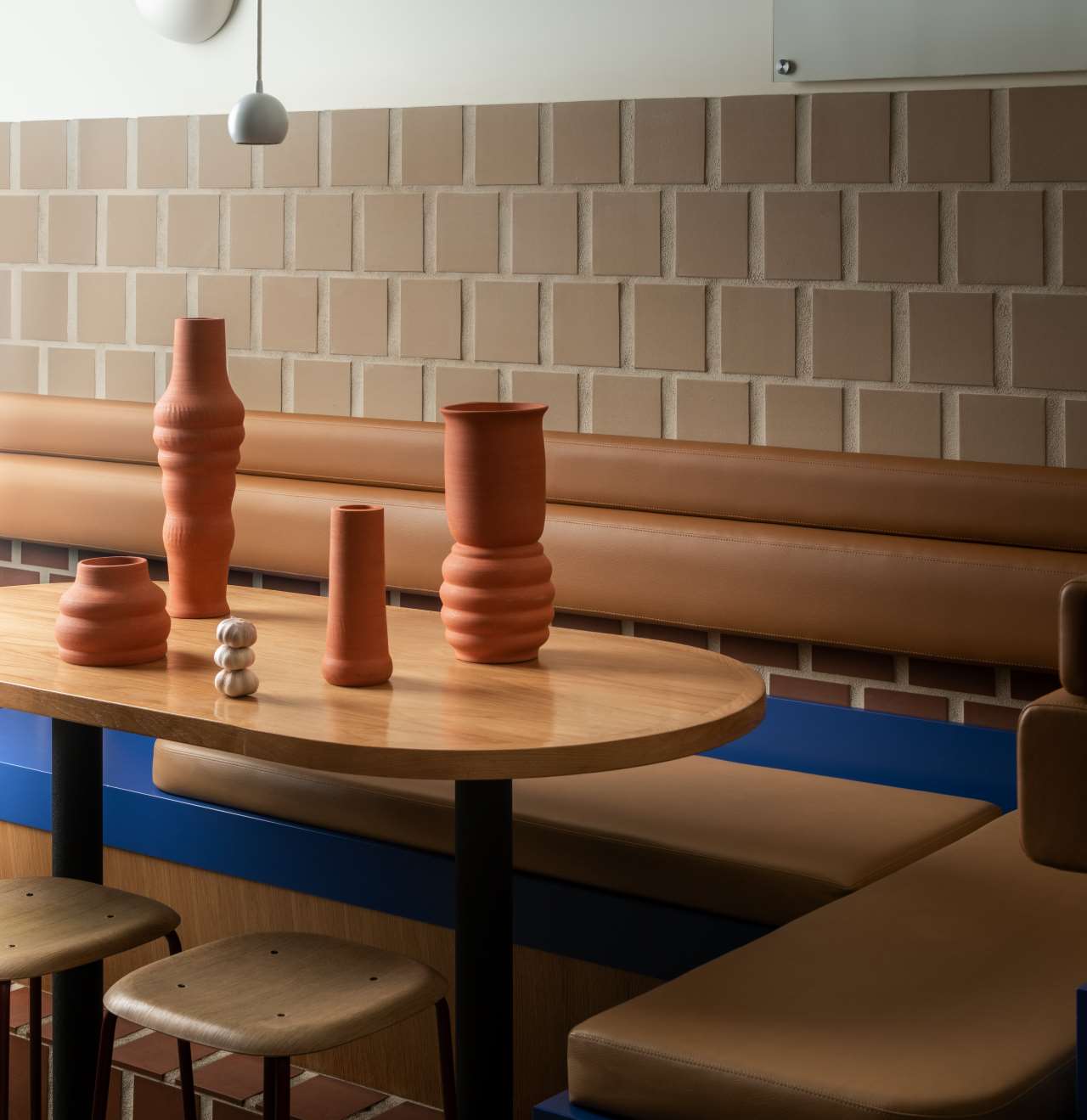
Photo by Conrad Brown. Styling by Kate Richard.
Como Taperia’s playful décor is dominated by large terracotta tiles playfully assembled on the walls to resemble brickwork, inspired by the three iconic brick chimneys in Jardins de les 3 Xemeneies in Barcelona’s Poble-sec (xemeneia means chimney in Catalan), which are all that remains from an early 20th century power station locally known as ‘La Canadiense’ as it was operated by a Canadian utility. You have to hand it to Ste.Marie: a Canadian tapas bar channelling a Spanish landmark built by Canadians, above all else it’s a witty concept that perfectly encapsulates the studio’s narrative-based approach.
The team was also inspired by another Catalan icon, artist Joan Miró, whose paintings are populated by biomorphic forms and vivid colours, both of which pop up in Como Taperia’s interior, most notably in the use of Miró’s characteristic blue that punctuates the space in bold, linear strokes. But more than colours or forms, the designers have taken a page from Miró’s artistic practice of combining spontaneity with meticulous planning in order to create a uniquely original venue that nevertheless conveys the camaraderie of traditional Spanish tapas bars.
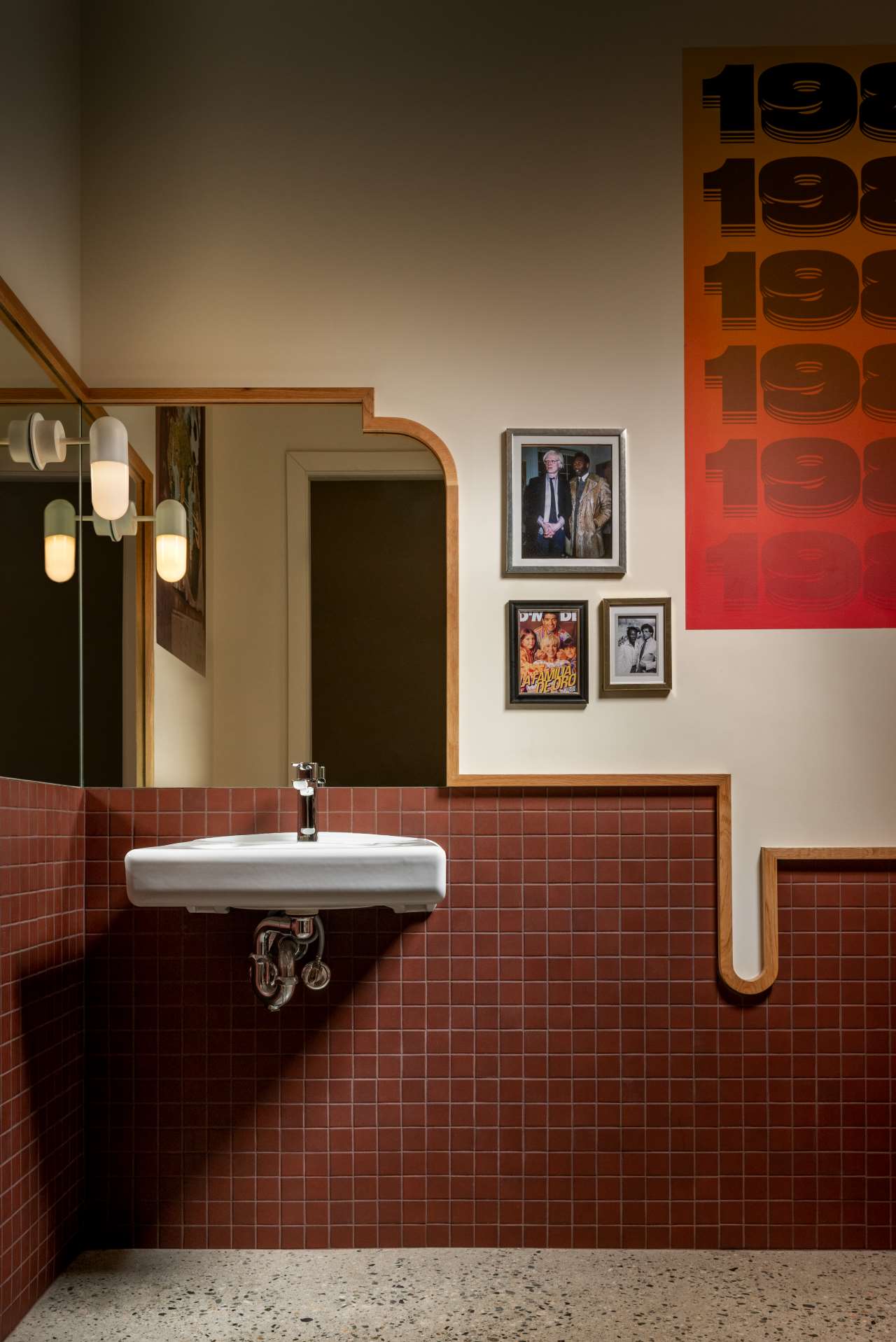
Photo by Conrad Brown. Styling by Kate Richard.
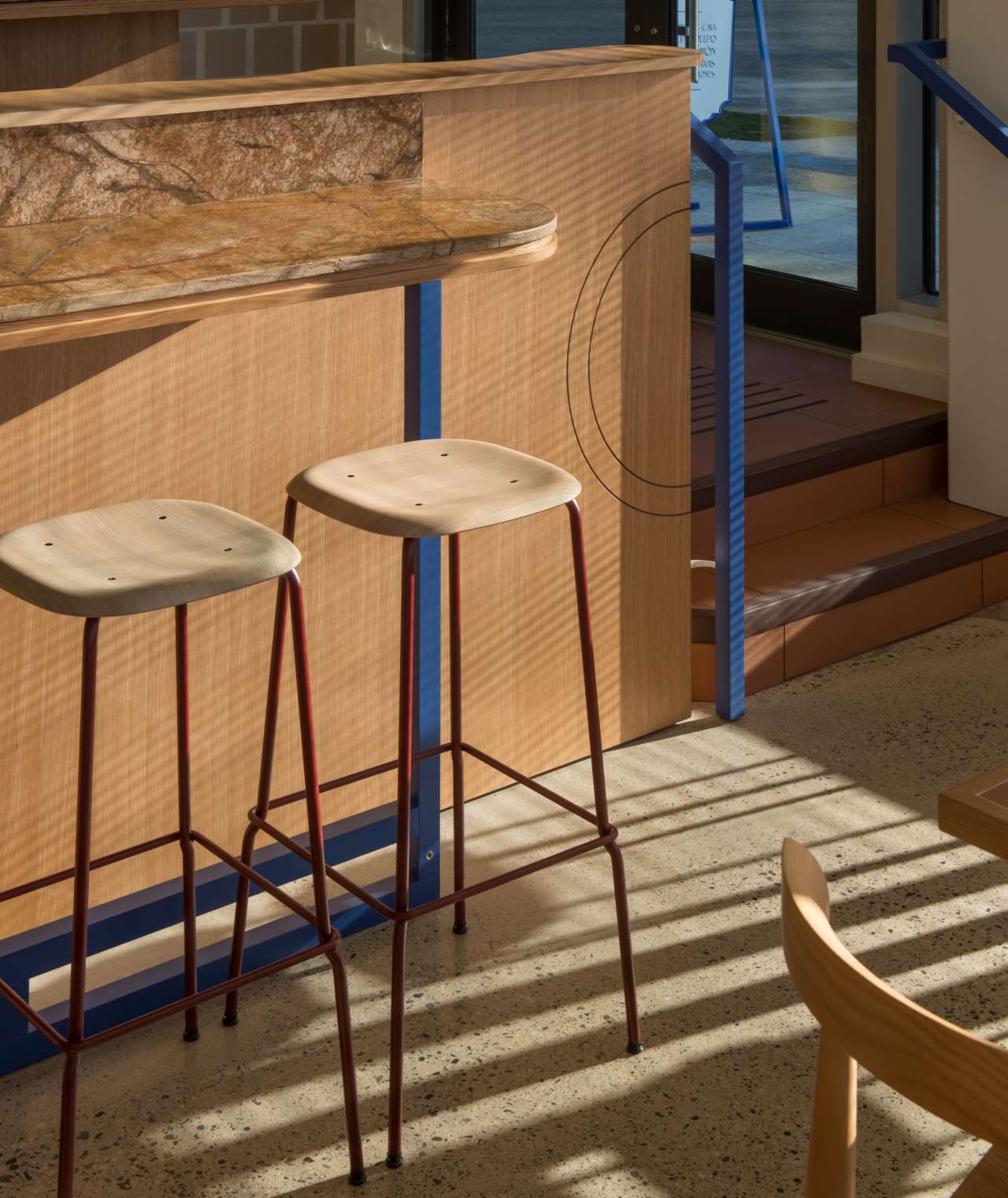
Photo by Conrad Brown. Styling by Kate Richard.
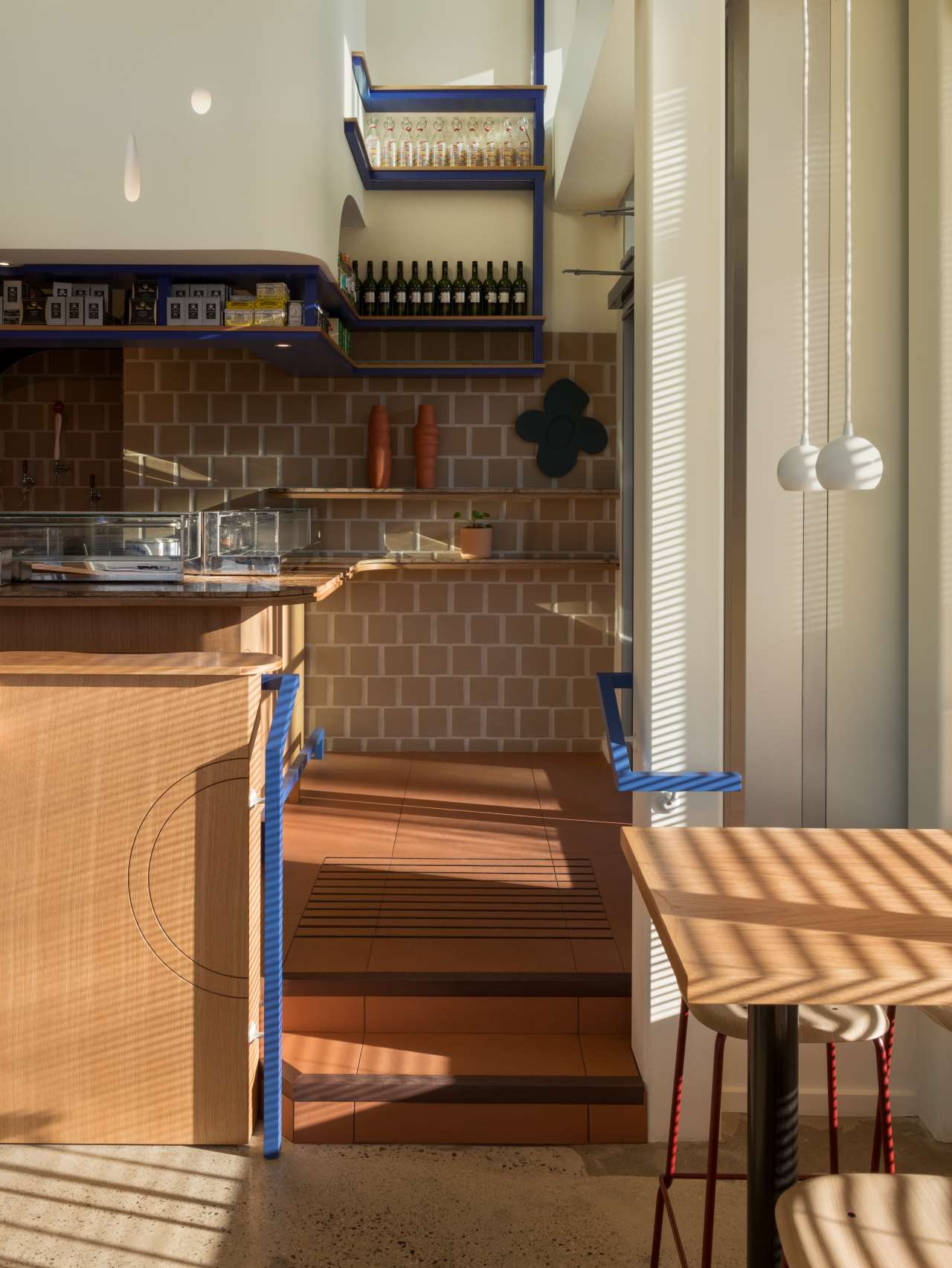
Photo by Conrad Brown. Styling by Kate Richard.














